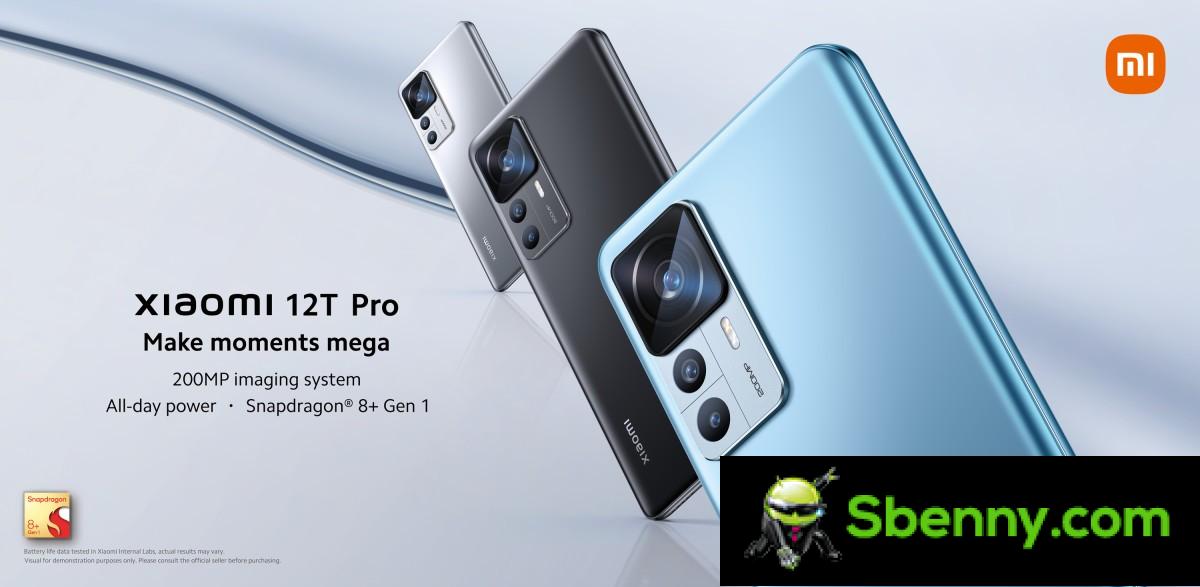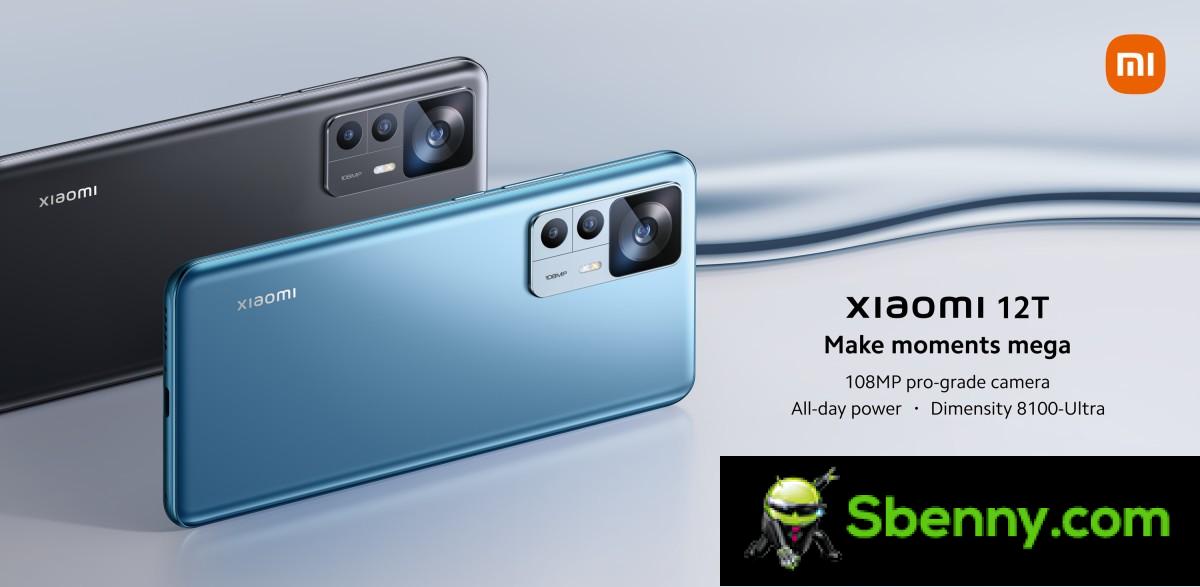Xiaomi is now entering the 200MP era after providing a phone with an impressive 1 “sensor. The imager of this one is not that big, but still impressive enough. As usual, the T series is a thing of its own. , rather than a sequel or moving to the Xiaomi 12 series. These are also not really related to the 12S models, so let’s look at them with fresh eyes.
Xiaomi 12T Pro
The more exciting of the two specs, the Xiaomi 12T Pro is the company’s first phone with a 200MP camera. It is built around the Samsung ISOCELL HP1, a 1 / 1.22 “sensor with 0.64 µm pixels, which can be clustered at 1.28 µm (4 in 1) or even 2.56 µm (16 in 1) depending on the lighting conditions and the intentions of the user.

There’s no telephoto onboard, but the high-resolution sensor natively supports 2x lossless digital zoom. It can also shoot 8K video and record HDR10 + footage. And it has optical image stabilization (OIS) for longer exposures in the dark and more stable footage, as well as advanced features like eye-detection and motion-detection autofocus.
If you’re buying the 12T Pro for its camera, it has to be for the head unit. The other three aboard aren’t quite as impressive. Let’s start with the nearby 8MP ultrawide with its 1/4 ”sensor (1 / 1.12 µm pixel) and 120 ° f / 2.2 lens and take a quick look at the 2MP macro camera.




Xiaomi 12T Pro
More interesting things are happening on the front, starting with the 20 MP selfie camera (1 / 3.47 “, 0.8µm, f / 2.24 and 78 ° lens). There is also an in-display fingerprint reader on the front.
Speaking of the display, it is a 6.67-inch AMOLED panel with 1,220 x 2,712 px resolution (20: 9, 446ppi). It can run at 120Hz or you can let it automatically switch between 30, 60, 90 and 120Hz modes. It’s a 12-bit panel with HDR10 + and Dolby Vision, which promises perfect color images thanks to factory calibration. It has a typical brightness of 500 nits (900 nits peak) and is protected by Gorilla Glass 5.

One thing this phone shares with the 12S series is the Snapdragon 8+ Gen 1 chipset, which will continue to offer a great balance of performance and efficiency even after the fast approaching 8 Gen 2 arrives. Xiaomi has significantly upgraded the vapor chamber: Compared to the 11T Pro, the new model has a 65% larger VC and 125% more thermal material (and the 11T Pro had to keep a cool SD 888).
Either way, the 8 Gen 1+ is paired with 8GB of LPDDR5 RAM and 128GB of UFS 3.1 memory in the base version, but we also get 8/256GB and 12/256GB configurations. The phone is launched with Android 12 (MIUI 13).
The 12T Pro is powered by a fairly large 5,000mAh battery with 120W fast charging (a power brick is included in the box). There are some phones that go up to 120W, but most have smaller batteries – 5,000mAh is enough for up to 13.5 hours of screen activation and thereafter the battery can be restored to 100% in just 19 minutes. .
A few more things: The phone has stereo speakers (tuned by Harman Kardon, with Dolby Atmos support), Wi-Fi 6 (ax), Bluetooth 5.2, and NFC (in some regions). This is a dual-SIM phone with 5G connectivity.



Xiaomi 12T Pro in black, blue and silver
The Xiaomi 12T Pro will be available from 13 October through the official Xiaomi channels. The 8/128 GB model will be priced at € 750, although finding one at a store near you could be a challenge. At least for Europe 8 / 256GB is the most common option (price 800 €) and in some countries you can also get 12 / 256GB (for 850 €).
Xiaomi 12T
While it lacks the wow factor of the Pro model’s camera, the Xiaomi 12T offers an equally stunning screen and battery, as well as the capable performance of a Dimensity 8100-Ultra chipset and solid 108MP camera.

This is based on the ISOCELL HM6, a 1 / 1.67 “sensor with pixels of the same size, 0.64 µm, although it exceeds 9 in 1 binning for an effective pixel size of 1.92 µm. This has also OIS and an f / 1.7 aperture, though it lacks 8K video or more advanced features like AF eye tracking.
The remaining cameras are the same as the Pro, including the 8MP ultra wide-angle (1/4 “, 1.12µm, f / 2.2 and 120 °) and the 2MP macro, plus the 20MP selfie camera (1 /3.47 “, 0.8µm, f / 2.24 and 78 ° FoV).
Same selfie camera, same display: 6.67 inch AMOLED 20: 9 panel with 1220p + resolution. It’s a 12-bit panel with HDR10 + (no Dolby Vision, though) and refresh rate of 30/60/90/120 Hz and touch sample rate of 480 Hz. Like on the Pro, it has a typical brightness of 500 nits ( 900 nits peak) and a GG5 protection.
For media you still have stereo speakers with Dolby Atmos, albeit without the magic of Harman Kardon. Connectivity includes Wi-Fi 6 (ax), Bluetooth 5.3 and NFC (in some regions), this is a dual-SIM phone with 5G connectivity.




Xiaomi 12T
As previously mentioned, the phone is powered by the Dimensity 8100-Ultra, which can be paired with 8/128GB or 8/256GB of storage (LPDDR5 and UFS 3.1, no 12GB RAM options). Works with Android 12 with MIUI 13.
Despite the different chipsets, Xiaomi claims that you can get up to 13.5 hours of screen wake up time and the phone comes with the same 120W charger that can bring the battery to 100% in just 19 minutes.

Xiaomi 12T in black, blue and silver
The Xiaomi 12T will launch alongside the Pro on October 13 and will be cheaper – € 600 for an 8 / 128GB unit. And unlike the Pro, you can actually find it easily. The 8/256 GB option can be yours for € 650.







Start a new Thread